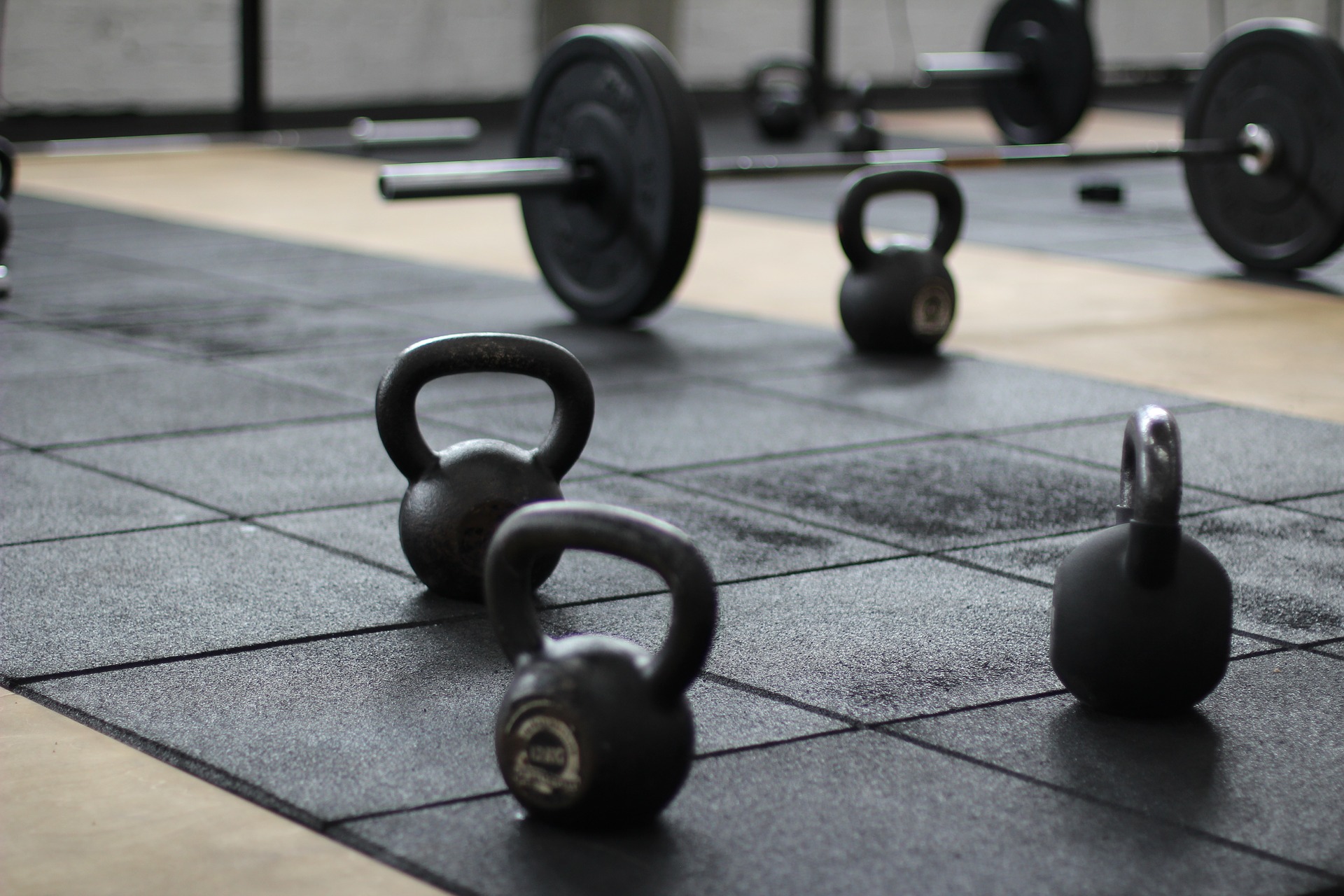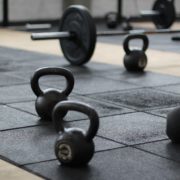Aging Without Frailty – A Series (Part 2)

Avoid the “frail trail”, get on the “strong path”.
I wish I had thought of those words. They belong to 87-year old Fred Bartlit, the West Pointer/Army Ranger/Attorney/bowl skier/strength-training gonzo I referenced in last week’s blog. Those words are his mantra and they describe his mission. 
Not being the most creative person around, and not above abject pilfery, I’m borrowing the words and jumping on Fred’s coattails. And, believe me, they are worthy coattails to be on because he, more than anyone I’ve run across, is doing more to call attention to the biggest threat to living a healthy, meaningful second half of life.
Chances are you haven’t heard of it. All of us have some degree of it if we are over 30.
And we didn’t “catch it”. It’s not an air-borne or body-fluid-transmitted affliction. We are self-inflicted.
It’s called sarcopenia. The dictionary defines it as a “loss of muscle tissue as a natural part of the aging process.”
It started when we were thirty or so. We didn’t really notice it because it’s stealthily insidious, creeping up on us very slowly. We reach 50 and the drives are shorter, the handicap higher, the waistline larger. We hit 60 and find we can’t get up easily off the floor when trying to play with our four-year-old grandchild. At 70, the back goes out, the pickle jar lid won’t budge. Or – well, you get the point.
After 75, the loss of lean tissue increases exponentially if not remedied.
Sounds like a death spiral, doesn’t it? It can be just that, accelerating the journey to debilitating frailty.
Perhaps it’s no surprise if you’ve never heard the word from your primary care doc. The name, sarcopenia, didn’t even exist until invented in 1989 by Irwin Rosenberg by combining the Greek word for “flesh” (sarx) with the Greek word for “loss” (penia) to describe the loss of skeletal muscle mass and size. The meaning wasn’t even codified into the International Classification of Diseases code until 2016 despite being a condition that has existed as long as mankind.
In fact, Mr. Bartlit, in his efforts to get the word out about sarcopenia, found that many – maybe even most – practicing physicians are stumped by the word. Most medical professionals simply think of it as an inevitable part of the aging process. Staying strong and vibrant into old age is a very dissonant thought for physicians only trained to prescribe or scalpel. Considering that 85% of physicians never take a single class in geriatrics in medical school, this perhaps isn’t so surprising.
It’s no mystery then that few are providing a remedy for this looming health crisis.
It’s a lifestyle malady
Sad to say, we are weaker by the day and we are wasting our lives away unnecessarily.
With all our striving for convenience and comfort, we’re paying a price by way of extended frailty in late life. Our bodies are not designed for today’s lifestyle. We are built to move. Escaping saber-tooths or bringing down mastodons has given way to binge watching Game of Thrones. Chasing a gazelle or forging for tubers has given way to a table at Applebees. The heaviest thing many of us lift in a day may be the TV remote or that plate loaded with lasagna. The only time we get our heart rate above normal is running to catch the last bus/subway home or trudging upstairs to bed.
My neighbor just bought a 700 horsepower snowblower that would clear Independence Pass above Aspen in a weekend to clear his driveway of the typical 3-inch snowfalls we get here in Denver.
Consider the ridiculous concept of the Rumba. My wife regularly clocks half of her daily 10,000 Fitbit step goal when she vacuums our unnecessarily large suburban home. (I help occasionally, honest!)
I could go on and on.
I hope we’re waking up.
I mentioned last week that one of the biggest fears we have as we age is losing our independence. Sarcopenia is THE major contributor to loss of independence.
Think about it. What is the ultimate loss of independence? Would you agree it’s being warehoused in an under-staffed, urine-scented nursing home? Where dementia, drool and Depends prevail. Where you may be one of the fortunate few who can get to mealtime without help.
What is typically the key criteria for being pushed into that environment? It’s the loss of ability to perform basic bodily functions, due, in large part, to physical weakness – loss of muscle power. Showering, toileting, dressing, walking – all require muscle strength and balance.
Most of us just simply let it get away from us and accept it as inevitable.
Sarcopenia is treatable – in fact, reversible. At any age.
Fact is, sarcopenia is a choice. Muscle loss can be reversed starting today. No, if you are 60, don’t expect to be or look like the tattooed and tank-topped or lululemon-clad 30-somethings at the gym that work 52×7 to improve their mirror-muscles. But you also don’t need to look like the pencil-thin, stooped, slow-gaited “geezer” or “hag” that you swore 30 years ago you would never become.
Embrace the gift of longevity
We hear a lot about how we are all living longer. About this “gift of longevity”. Our average lifespan has nearly doubled since 1910. Most of it is due to the profound medical advances that we’ve experienced in the last several decades.
It’s not true, however, that quality of life has kept pace.
Technology is adding years to our life. For most of us, it isn’t adding life to our years. Today, medical science can do a marvelous job of keeping people alive in what writer Douglas Adams called “the long, dark teatime of the soul”. The words used by 15th century English philosopher Thomas Hobbes to describe the life of man seem appropriate to describe the life many experience in our culture in their later years: “solitary, poor, nasty, brutish. And long”.
One simply needs to look at the exploding growth of assisted living facilities and the drugs advertised to treat chronic illnesses to understand that the quality of our later years isn’t what it could be. And that we aren’t embracing this gift of longevity.
For years now, I have publicly and openly expressed my intent to live to 100 or beyond. I’ve shared with you that, without fail, my proclamation is met with repulsion. The sole reason for the repulsion is both honest and ignorant. It’s based on the fear of frailty, on the effects of sarcopenia. It’s expressed in a void of understanding the causes and that it needn’t be.
The solution
Reversing sarcopenia is:
- Simple
- Very inexpensive
- Immediate
- Drug-free
Reversing sarcopenia requires:
- An attitude shift
- Habit change
- Patience
I hope, b y this point, we’ve established the “why” of overcoming sarcopenia. I’ll conclude the series next week by touching on the “how”.
Let me wrap this week with this quote from Fred Bartlit’s book “Choosing the Strong Path: Reversing the Downward Spiral of Aging”
“The crucial takeaway here is that for almost all of us, the last 15 to 30 years of our lives bear no resemblance to what we expected. And, by far, the major reason for this end-of-life disappointment is our loss of strength with age.”
Stay tuned. And leave a comment if you are on a “strong path”, what your path looks like, and what effect it has had.





I am walking 11000 steps a day. And feeling so much better for it.
Wow, Peter. 11,000 a day is quite a feat. I find it challenging to hit a weekly goal of 60,000 and I’m pretty gonzo about this workout stuff. Congratulations on that discipline. Quick question: in that 11,000 is there an element of strength training. As my series is pointing out, resistance training is even more vital to avoiding sarcopenia than just aerobic. To borrow a physician’s quote: “Aerobic exercise will give you life; strength training will make it worth living.” I’d be curious how, or if, you are incorporating some resistance training in your fitness program. Thanks for your comment!!
Gary, thanks for creating an awareness on this inevitable evil, sarcopenia. Even lifting remotes will become a thing of past one day thanks to voice controlled remotes :). It’s funny you mentioned binge watching Game of thrones. I actually watched one complete season of GOT working on my stationary bike.
Hey Balaji, that’s good multi-tasking! Maybe you could work some barbells while you bike and watch GOT!!
I think the very best thing I did for myself at 50 years of age was training and completing 4 marathons over a 4 year period. I didn’t really understand what it would do for my physical body over the long haul but now that I am 66 I realize that it has given me a really strong base. I don’t do as much exercise now but I feel overall Strong and have good balance and endurance. I wish more people would realize the benefits of strength training and the positive long term affects for their physical/mental/spiritual and emotional well being.
Love your story, Candace. Thanks for your comments. Marathons at fifty+ is a big deal – way to go. Going into your 60’s and 70’s with that strong base will serve you well. I hope the series will help inspire you to continue the strength-training component of your exercise.
Sweet blog! I found it while surfing around on Yahoo News. Do you have any tips on how to get listed in Yahoo News? I’ve been trying for a while but I never seem to get there! Thank you
To the makeagingwork.com owner, Your posts are always insightful and valuable.
To the makeagingwork.com owner, Thanks for the well-organized and comprehensive post!
Hi makeagingwork.com webmaster, You always provide clear explanations and definitions.
I have recently started a website, the information you provide on this site has helped me greatly. Thanks for all of your time & work.
Dear makeagingwork.com administrator, Thanks for the well-organized and comprehensive post!
Dear makeagingwork.com webmaster, Your posts are always well-supported by facts and figures.
Dear makeagingwork.com administrator, Thanks for the well-presented post!
Hello makeagingwork.com administrator, Thanks for the well written post!
To the makeagingwork.com admin, Your posts are always well-received by the community.
Hello makeagingwork.com webmaster, Thanks for the informative and well-written post!
Hello makeagingwork.com admin, You always provide valuable feedback and suggestions.
Dear makeagingwork.com owner, Your posts are always well-balanced and objective.
Dear makeagingwork.com administrator, Your posts are always well written and informative.
Hello makeagingwork.com webmaster, Thanks for the well-structured and well-presented post!